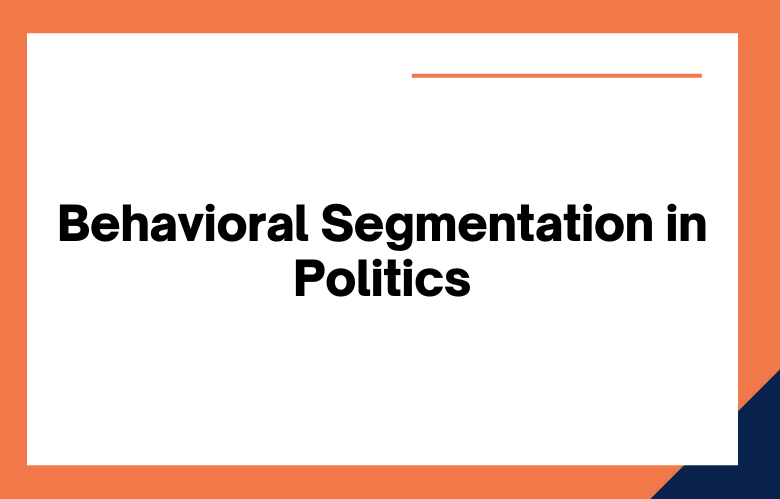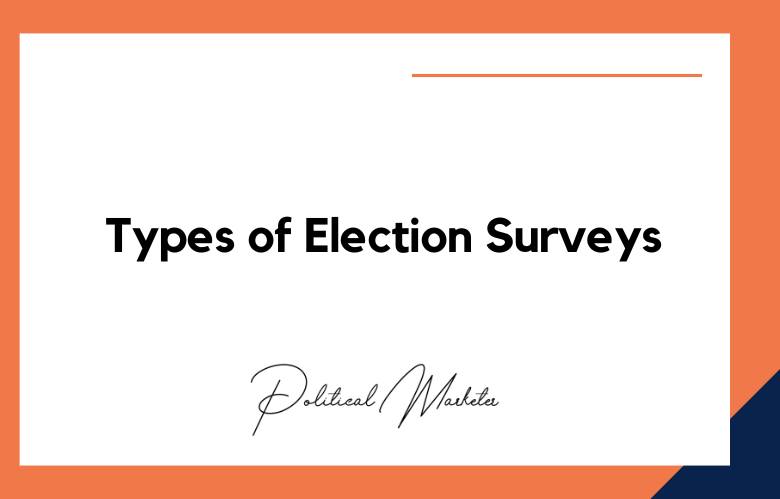Segmentation is a valuable tool for all businesses, and political campaigns are no exception. By dividing the electorate into specific groups, you can target your marketing efforts more effectively and increase your chances of winning votes.
We’ll look at how to use behavioral segmentation in political marketing. We’ll explore the different types of behavior used to segment voters and discuss some strategies for reaching each group.
Politics has always been a data-driven business. Campaigns have long relied on demographics to understand who their constituents are and what issues matter to them. But in today’s digital age, behavioral data is becoming increasingly crucial for politicians seeking to connect with components.
Behavioral segmentation allows campaigns to target individuals based on online actions, not just demographic information like age or gender. It gives campaigns a much more accurate picture of what voters care about and how they might be swayed by political messaging.
We’ll explore the basics of behavioral segmentation and discuss how it uses in political marketing.
Segmentation is one of the essential aspects of any marketing campaign. By dividing your audience into smaller, more specific groups, you can create more tailored messages that are likely to resonate with them.
We’ll look at how to use behavioral segmentation in political marketing. We’ll explore the different data types used to identify voter behavior and discuss some tips for using this information to target your campaign messaging.
What is Behavioral Segmentation?
Behavioral segmentation is a strategic marketing tool that identifies and targets specific groups of consumers with similar behavior patterns. By understanding and targeting these consumers, businesses can more effectively tailor their marketing campaigns and products to meet the needs and wants of their target audience.
It is a marketing technique that divides consumers into groups based on their behavior. It allows businesses to target specific groups with tailored messages that are more likely to result in a sale.
Behavioral segmentation targets prospects who show similar behaviors. By understanding what motivates these prospects, businesses can create customized messages that resonate with them.
This segmentation can be highly effective in increasing sales and creating long-term customers.
Behavioral segmentation is a method of dividing consumers into groups based on their observed behaviors. It allows businesses to target their marketing efforts better and improve customer satisfaction.
By understanding their customers’ behaviors, companies can more effectively tailor their products and services to meet the needs of each group.
Behavioral segmentation is a market segmentation that identifies consumers based on their observed behaviors.
Instead of segmenting markets by age, gender, income, or location, companies can segment their calls based on consumer interests, needs, and purchasing behavior.
Behavioral segmentation can be incredibly effective in targeting consumers, as it allows companies to tailor their marketing messages and product offerings to each consumer group’s specific needs and wants.
What is Behavioral Segmentation in Political Marketing?
Behavioral segmentation divides voters into groups in political marketing based on their observed behaviors. It allows campaigns to tailor their messages and strategies to different groups of voters to maximize their chances of winning.
Behavioral segmentation divides voters into groups based on their habits, attitudes, and voting behavior.
It allows political marketers to create targeted messages that appeal to each group’s needs and interests.
Behavioral segmentation is an essential tool for political marketers. Understanding voters’ different habits, attitudes, and voting behaviors can create targeted messages that resonate with each group. It helps to ensure that their campaigns are practical and efficient.
In political marketing, behavioral segmentation identifies and targets voters based on their behavior.
This approach allows campaigns to customize their messages and appeals to different groups of voters, which can result in more effective outreach.
Behavioral segmentation can target voters who are likely to be swing voters and those who are likely to be loyal to a particular candidate or party.
The information makes campaign strategy decisions about focusing resources and how to tailor messages.
How to Use Behavioral Segmentation in Political Marketing
One of the keys to success in political marketing is behavioral segmentation. You can create more effective campaign strategies by understanding and targeting different groups’ behaviors.
For example, undecided voters convince by messages focusing on candidates’ experience or qualifications. At the same time, voters vehemently opposed to a candidate may be more responsive to messages emphasizing their opponent’s flaws or shortcomings.
Behavioral segmentation can be a powerful tool for tailoring your political marketing message to maximize its impact.
As political campaigns focus on targeted marketing, behavioral segmentation is an increasingly important tool.
Behavioral segmentation allows campaigns to target voters based on their past behavior and predicted future behavior.
It allows campaigns to craft targeted messages that are more likely to resonate with voters and ultimately persuade them to support a particular candidate or cause.
To tap into the power of behavioral segmentation in political marketing, start by breaking down your target audience into smaller groups. Then, please create a profile for each group based on their unique needs and interests.
Finally, craft a personalized marketing campaign that addresses each group’s concerns. By following these steps, you can make your message resonates with the right people.
As the presidential campaign season ramps, political marketers are looking for ways to reach potential voters. One way to do this is through behavioral segmentation, which looks at people’s behavior patterns when making decisions.
Behavioral segmentation can target specific groups of voters with targeted messaging.
For example, those who vote to get a reminder to vote, while those less interested in voting target messages about the importance of voting.
Using behavioral segmentation, political marketers can more effectively reach potential voters and persuade them to support their candidates.
Behavioral segmentation is one essential thing in political marketing.
It is a process of dividing voters into groups based on their behavior, interests, and needs.
Doing this can more effectively target your marketing and messaging to these various groups.
It’s important to remember that not all voters are the same and will respond to different messages and strategies.
By digging into behavioral segmentation, you can ensure that your political marketing is as effective as possible.
Ways to Use Behavioral Segmentation in Political Marketing
Behavioral segmentation is a powerful tool used to market politics effectively. By dividing voters into different groups based on their behavior, campaigns can target specific messages to each group to convince them to vote. The strategy has been used in political campaigns for years and has proven effective.
Behavioral segmentation is a powerful political marketing tool. By targeting voters based on past behavior, campaigns can more effectively persuade rank Switch voters to win elections. Here are some ways to use behavioral segmentation in your next political marketing campaign:
Identify target voters. Most campaigns start with broad segments like age, gender, or geography. But behavioral segmentation allows you to go much deeper.
Look at voter history data to identify which features are most likely to vote for your candidate.
Craft a message that resonates with your target voter. What issues are they concerned about, and the values to hold? You can create a statement by understanding your target voter’s needs and motivations.
Use behavioral segmentation to target potential voters based on their voting history. For example, if someone has consistently voted for candidates from one party, they are likely to continue doing so.
Behavioral segmentation targets potential voters formed on the level of political involvement. For example, someone who has never voted is less engaged in the political process than someone who regularly votes and attends political rallies.
By using behavioral segmentation, political marketers can more effectively target potential voters and persuasion.
Behavioral segmentation can be a great way to target potential voters if you’re involved in political marketing.
Behavioral segmentation is about understanding people’s behavior and using that information to target them more effectively.
In political marketing, this can target potential voters who are likely to be receptive to your message.
This approach can be efficient if combined with other segments, such as demographics or psychographics.
Behavioral segmentation is a powerful tool that tailors political marketing messages to specific groups of people.
This technique can target voters based on their observed behaviors, such as voting history, media consumption habits, and even their values.
Behavioral segmentation can be an extremely effective way to create targeted, persuasive political marketing campaigns.
Conclusion
By understanding how people think and behave, we can create marketing strategies that better appeal to specific groups of voters. We hope this article has given you a better understanding of behavioral segmentation and its use in political campaigning.
Contact us today if you want more information on using behavioral segmentation in your campaigns or need help setting up a campaign strategy.
Our team of experts helps you win the vote!
One way to get in touch is by filling out our online form on this site or give us a call at
+91 9848321284. Let’s work together today!










